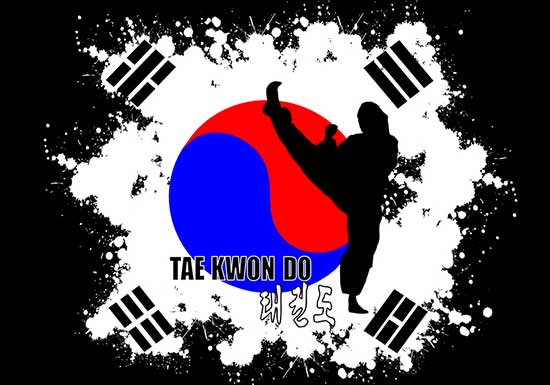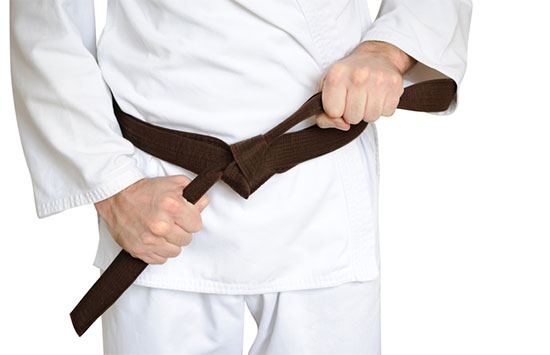You’re fascinated by martial arts, but can’t decide between Taekwondo and Hapkido.
Both have rich histories, and distinct philosophies and offer unique techniques.
Whether you’re seeking a disciplined training regimen or practical self-defense skills, this comparison will help you weigh their merits and make an informed decision.
Contents
Key Takeaways
- Taekwondo emphasizes discipline, respect, and the refinement of the practitioner’s character, while Hapkido focuses on harmony and the circular flow of energy.
- Taekwondo focuses on striking and kicking techniques, while Hapkido focuses on joint locks and throws.
- Taekwondo emphasizes offensive and defensive maneuvers in self-defense, whereas Hapkido emphasizes defensive and countering tactics in self-defense.
- Taekwondo aims for power and agility in the physical aspect, while Hapkido aims for control and precision in the physical aspect.
Historical Roots and Evolution
You’ll find that both Taekwondo and Hapkido have their origins deeply rooted in Korean martial arts history, yet each developed through unique paths over the centuries.
Taekwondo, known for its dynamic kicking and striking techniques, evolved from traditional Korean martial arts like Tae Kyon but was greatly influenced by Japanese and Chinese martial arts during the 20th century. It became standardized after the Korean War, with an emphasis on sports and competition.
Conversely, Hapkido emphasizes circular motion, non-resistive movements, and joint locks, drawing heavily from Daito-ryu Aikijujutsu. It’s been shaped by a philosophy that combines dynamic physical techniques with mental discipline. Though less spotlighted than Taekwondo, Hapkido offers a comprehensive approach to self-defense, focusing on using an opponent’s energy against them.
Philosophies and Goals
When exploring the philosophies and goals of Taekwondo and Hapkido, you’ll notice they embody distinct principles that shape their respective practices. Taekwondo emphasizes discipline, respect, and the refinement of the practitioner’s character through its five tenets.
Conversely, Hapkido focuses on harmony and the circular flow of energy, prioritizing self-defense and the ability to redirect an opponent’s force.
Here’s a table to illustrate some key philosophical differences and goals:
| Principle/Goal | Taekwondo | Hapkido |
|---|---|---|
| Core Philosophy | Discipline and Character Development | Harmony and Energy Flow |
| Focus | Striking and Kicking Techniques | Joint Locks and Throws |
| Self-Defense | Offensive and Defensive Maneuvers | Defensive and Countering Tactics |
| Mental Aspect | Concentration and Perseverance | Adaptability and Fluidity |
| Physical Goal | Power and Agility | Control and Precision |
Understanding these aspects, you can appreciate the nuanced approaches each martial art offers to personal development and self-defense.
Key Techniques Compared
As you go further into the key techniques of Taekwondo and Hapkido, it’s clear that each martial art offers a unique set of skills tailored to its underlying philosophy.
Taekwondo emphasizes striking, with a strong focus on kicks, punches, and blocks. You’ll encounter front, side, turning, and flying kicks, each demanding precision and power. It’s about using the legs’ reach and strength to your advantage.
In contrast, Hapkido incorporates a broader spectrum of techniques, including joint locks, throws, and grappling. It’s defensive, aimed at neutralizing an opponent’s attack through redirection and control. You’ll learn to use an assailant’s force against them, employing circular motions and non-resistive movements.
While Taekwondo is more straightforward and offensive, Hapkido’s approach is about fluidity and versatility in defense.
Training and Progression
In Taekwondo, you’ll find a structured approach with an emphasis on patterns, known as poomsae, and sparring sessions that hone your striking techniques. Progression is typically marked by belt ranks, starting from white and advancing through a series of colors to black.
Hapkido, on the other hand, offers a more fluid curriculum. You’re likely to engage in a mix of joint locks, throws, and strikes from the get-go. Training is often less formalized, with a focus on practical self-defense situations. Belts still signify your level, but there’s an added emphasis on personal growth and adaptability over strictly defined criteria.
Both arts require dedication, but the journey you’ll take reflects their distinct philosophies.
Practical Applications and Scenarios
How do Taekwondo and Hapkido fare when you’re faced with real-life confrontations? Taekwondo’s strength lies in its powerful and precise strikes, especially kicks, making it effective for maintaining distance from an attacker. Hapkido, with its focus on joint locks and throws, shines in close combat scenarios where controlling an opponent is important.
| Aspect | Taekwondo | Hapkido |
|---|---|---|
| Range | Long-range strikes | Close-quarters grappling |
| Strikes | Emphasizes kicking techniques | Includes hand strikes, kicks, and joint locks |
| Self-defense | Effective in preemptive defense | Strong in reactive and control situations |
| Throws | Limited | Extensive and varied |
| Versatility in Combat | Ideal for one-on-one situations | Adaptable to multiple assailants |
Both arts offer distinct advantages, and their practicality largely depends on the scenario and your ability to apply the techniques effectively.
Conclusion
You’ve seen how Taekwondo and Hapkido, with distinct historical roots, offer unique approaches to martial arts.
While Taekwondo emphasizes striking and kicking, Hapkido incorporates more grappling and joint locks.
Your training path and progression will vary, reflecting each art’s philosophy and technical focus.
Whether you’re seeking self-defense, competition, or personal growth, understanding the practical applications of both can guide you in choosing the path that aligns with your goals.




